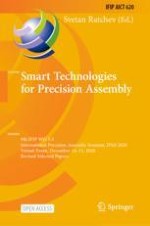1 Introduction
2 Automated Unscrewing Method
2.1 A Human-Robot Collaborative Disassembly Cell
2.2 Automated Unscrewing Process
3 Mitigating Strategies for Failure Modes
3.1 Strategies for Dealing with Failure Modes
3.2 Detection Methods for Failure Modes
4 Experimental Tests and Results
Search and engage | Unfasten | ||
|---|---|---|---|
Rotating speed of the tool | 25 r/min | Rotating speed of the tool | 100 r/min |
Target fastening torque | 14 Nm | Maximum unfastening torque | 25 Nm |
